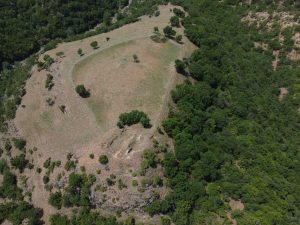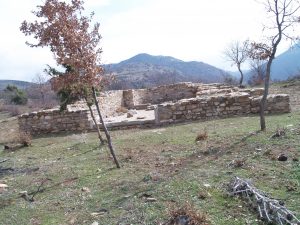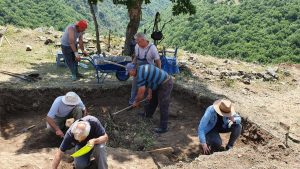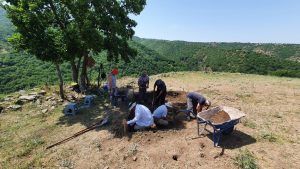Kozjachka reka Canyon is the location where the National Institute for Cultural Heritage and Museum – Štip conducts archaeological excavations at the “Kula” site in the village of Kalauzlija.
The Kula site represents a settlement and fortress from the late antique period. It is situated 2 km southwest of the village of Kalauzlija and 3.5 km southeast of Bargala. Positioned on an elevated ridge that rises at the western end above the bed of the right bank of the Kozjacka River, the settlement and fortress are among the numerous defensive points arranged around the late antique city of Bargala. On the terrain, a large water cistern has been identified, along with spaces from a larger structure, in the ruins of which, among other findings, fragments of glass paste for wall mosaics and a large number of burial constructions have been identified. On the northern plateau, archaeological excavations in 2005 revealed an early Christian church dating from the 4th to the 6th century. In the medieval period, on the ruins of the early Christian church, a medieval necropolis and settlement were located around the church as a cult place on the broad plateau surrounding it.




